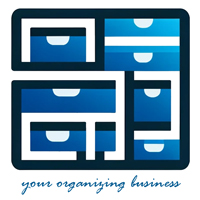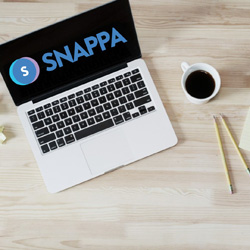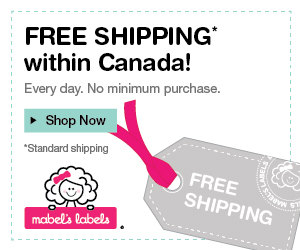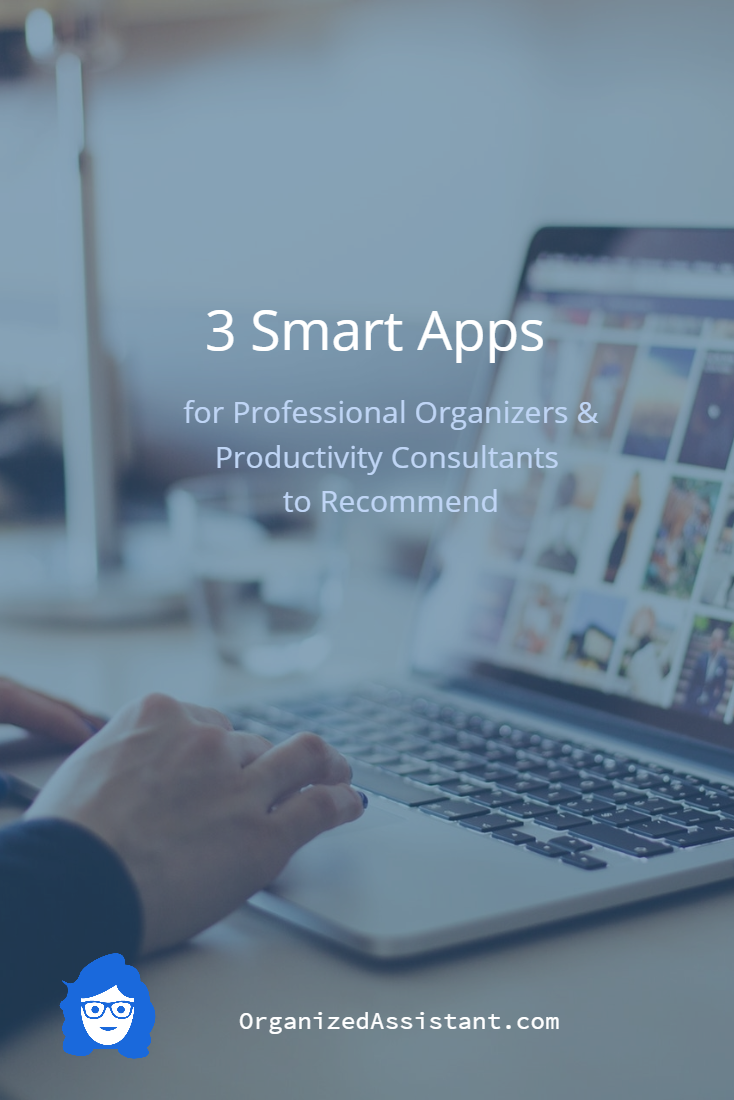4 Project Management SaaS Tools to Increase Productivity and Organization For Your Business
This page may contain links to Amazon.com or other sites from which I may receive commission on purchases you make after clicking on such links. Read my full Disclosure Policy

There is so much great software available now, and some of it includes functions that would have required multiple programs in the past. Whether you’re looking to streamline your own business or that of a client, it’s important to know what’s out there. In this post, Tim Worman outlines four of the most popular project management SaaS (software-as-a-service) on the market today.

As a small business owner, it’s easy to get overwhelmed and feel discouraged. After all, you have a lot on your plate. In addition to mastering your craft, you need to master SEO, balancing a budget, project and client management, and business analytics, among everything else.
Fortunately, project management SaaS helps lighten the load. It automates and streamlines tasks, providing structure and freeing up employees’ time. Thus, project management SaaS is invaluable for productivity consultants and other business professionals to cut costs, stay organized, and save time.
It’s especially useful when dealing with more complex projects that have several moving parts. The right project management SaaS enables business owners and startups to break projects into more manageable pieces, providing a birds-eye-view of the tasks at hand.
How to Choose the Right Project Management SaaS For Your Business
So what criteria should you decide when determining the right project management SaaS for your business?
My answer to this question is the same unhelpful tripe you’re probably tired of hearing: It depends.
So let me offer something a little more useful. You should only consider project management SaaS that includes the following:
- Invoice billing
- Task management
- Project/Client management
- Scheduling
- Budgeting
- Document/Form Creation
Doing so ensures you won’t need additional software down the road. As such, the four project management SaaS products included here offer these capabilities.
But before I go any further, it’s crucial to understand SaaS and its role in business.
What is SaaS and Why Should You Care?
Software-as-a-Service (SaaS) is a web-based subscription model that enables anyone with an internet connection to access data. It operates from a central location where users pay a monthly or annual fee to access – for our purposes – their project management tool.
Some of the world’s most recognizable companies operate a SaaS business model, including Slack, Hubspot, Quickbooks, Salesforce, Dropbox, and Adobe.
SaaS business model has become mainstream, and for a good reason. The benefits are tremendous:
- Cost-effective – There are no licensing, installation, or maintenance fees. Those expenditures are the responsibility of the SaaS platform.
- Recurring Revenue – Charging monthly or annual fees ensures recurring revenue.
- Ease of Use – SaaS apps are notoriously easy to use. Customers login to their account and can immediately pick up where they left off the previous day.
- Scalability – Low monthly/annual subscriptions make SaaS products easily scalable.
4 Project Management SaaS Tools to Consider
Below are four popular project management SaaS tools that provide structure and organization for your business, increasing productivity. While there are many more, these four offer the more impressive array of features at a price point your budget can handle.
17 Hats
Small business owners wear many hats: budget analyzer, employee management, inventory specialist, client acquisition lead, and marketing director, among others. As such, 17 Hats harnesses the need for small business owners to assume many roles and include features that every small business owner needs to grow their business (hence, their name).
A powerful (and free) Customer Relationship Management system (CRM) is one of the more enticing features it offers. You’ll have access to all contacts, leads, and clients in one location. However, because it’s free, like every SaaS product, you’re severely limited with what you can do. For example, you’re only given four invoices per quarter to bill clients. So as your business grows, you’ll need to upgrade to a paid plan.
17 Hats’ paid plans divide into 3 Automation Levels. Each level has access to all the following features:
- Workplace dashboard to view all client and project activity
- Customer-created documents for every occasion or activity
- Invoicing and recurring billing
- Branding elements
- Automated emails (with templates)
- To-Do workflows
- Task management dashboard
- Client portal
- Online scheduling
- Lead capture form and autoresponder for lead generation
- Advanced analytics
However, the level you sign up for will determine how many documents, invoices, lead capture forms, etc. you have access to and can send to clients.
Hello Bonsai
Other than having an awesome-sounding name, Hello Bonsai is a robust project management SaaS tool. However, unlike the other SaaS tools on this list, it doesn’t have the name recognition that’s often needed to survive in this space. Nevertheless, its client-focused interface more than makes up for it.
Perhaps more so than its competitors, Hello Bonsai is tailored toward client interaction and caters to freelancers.
For example, Hello Bonsai has an impressive selection of predesigned invoices, proposals, agreements, contracts, and quotes forms. It’ll guide you through the sales process of when clients sign up to signing a contract and closing the deal. All conceivable documents, forms, and agreements are readily available and customizable.
Hello Bonsai also includes a task tracking work portal that tracks all workflows and tasks for every client. This portal tracks all your clients’ tasks, to-do’s, the employee assigned to each client, and due dates.
HoneyBook
HoneyBook markets itself as an all-in-one business platform. It’s an end-to-end client management system that caters specifically to small- and mid-sized businesses. You can access all projects, client communications, and tasks from your command center. When you click on a project or client, it brings up all communications, documents, forms, and activities associated with said project or client. So, for example, if you’re trying to see what’s going on with a project, you can see all stages, from inquiry to payment, and add an action or pick up from where you left off.
What’s really intriguing is that no chat or communication is lost depending on your number of employees. Since all client activity is in one place, you can pick up where the last employee left off, saving clients (and yourself) the frustration of reiterating past conversations.
Wrike
Wrike is built for and markets to agencies and team collaboration. While solopreneurs can get some use out of it, you’ll be better off with one of the other options on this list.
Since it caters to teams, many of its features are far more robust than the other project management SaaS on this list. For example, its 3-pane dashboard provides a consolidated view of your entire workflow. The first pane provides a view of all teams, projects, and financials, allowing you to manage resources more efficiently. The next pane enables you to create tasks, assign tasks, set due dates, and finalize approvals. Finally, the last pane lists all current tasks and subtasks, ensuring nothing is overlooked or missed.
From there, you can pull up and gauge your analytics in real-time, use the form builder to create documents using conditional logic, automate workflow with its over 400+ integration, and collaborated team collaboration tools like live editing.
Concluding Thoughts
I hope this provided helpful guidance on organizing your business with project management SaaS tools to increase productivity while removing unnecessary stress. If you incorporate these tools into your business and commit to using them every day, there’s no doubt you’ll find the same benefits I’ve enjoyed since taking the leap.
Photo by Vadim Vaseni / DepositPhotos
Join the Community
Did you find this post helpful?
Sign up to get new posts by email every week!











I’ve never heard the term SaaS before, but I understand the concept and agree that this model is proliferating. CRM tools can provide wonderful structure, especially for those for whom keeping track of a lot of details doesn’t come naturally. My photographer uses 17 Hats and loves it!
17hats sounds great, and could probably replace several other tools I currently use. I considered switching, but for me it wasn’t worth the time and effort to transfer everything over, learn the new system, and train the other people who work with me. If I were starting today, I would definitely use it or something similar.
My problem with SaaS is that I prefer to pay once for something, up front, and be done; with so many monthly charges, it’s like paying rent for lots of little (and not so little) places. That said, it’s really nice not having to involve yourself with maintenance. I’m intrigued; although I know 17 Hats and Wrike, Hello Bonsai and HoneyBook are brand new to me!
I probably wouldn’t use any of these (I don’t invoice; I require payment date-of-service, which I promote as a benefit to clients, who don’t have to worry about getting billed, remembering to pay, or the increased costs associated with my having a more complex back end.) However, I could definitely see these as options for several of my clients. I think HoneyBook is the most visually appealing for managing all those projects, but they are all intriguing.
It seems that one-and-done payments are going by the wayside in terms of software. For example, you used to be able to buy Microsoft Office and keep using it until you need to buy a newer version; now it’s a yearly subscription. When there’s something I need (not want), I keep my eye open for deals; sometimes you can even lock it at a special price for as long as you maintain your subscription. The key is to keep track of your subscriptions and cancel them if you’re not getting use of the product.
I am going to check a few if these out. I’m particularly interested in HoneyBook. A few of my clients have asked about it. I currently use Dubsado. Thanks for the great article.
I’ve heard good things about Dubsado! Let me know if you’re ever interested in writing a guest post about it.
I can see the appeal to new business owners since they usually have lower funds. They may not be able to buy services in companies, like QuickBooks and Microsoft. The only concern I have is when the company grows; the SaaS company services need to offer growing companies the services they need, or they will need to leave and their data may not be transferrable. Resulting in a revamping of their administrative systems and processes which could take a while to implement.
That’s an excellent point – you want to choose a service that can grow with your business.
The term SaaS is new to me, as Seana said. I can see how these types of systems can be beneficial. The idea of having all things related to a specific client (invoicing, communication, etc.) as HoneyBook does, sounds fantastic!
It’s a fun name too, isn’t it?
Thanks for defining SaaS. I didn’t know what it was. It takes a lot of tools to run a business and to be efficient at it. We use a CRM, a scheduler, a bookkeeping tool and google tools. There are so many out there that I find myself asking if I really need one more thing.
I know what you mean! It’s best if you can use one tool for multiple purposes or have them integrated somehow. It’s so easy to update a client email address (for example) in your Contacts but forget to change it in your invoicing app or elsewhere.